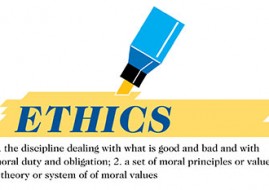#Ethics: Confronting Risks of Social Media Use
By Danielle J. McCall & Saul Wilensky
Once dismissed as just another passing trend or juvenile craze, social media is now a fixture in every aspect of modern life. The ABA’s 2014 Legal Technology Survey of more than 850 American attorneys suggests that at least 75% of practitioners use social media in a personal or professional capacity. See, Allison Shields, “Blogging & Social Media,” ABA TechReport 2014, 1, 3 (2014). As social media’s place in the legal profession evolves, so too do the ethical considerations facing attorneys and their clients. This article addresses some of the most significant ethical issues involving the use of social media in litigation, with special attention given to New York advisory opinions and ethical guidelines.
Securing and Advising the Client
Social media platforms such as Reddit and Twitter provide for direct, instantaneous interaction between users, which can foster the kind of environment where ethical missteps—like impermissible solicitation—thrive. Relying in part on New York Rules of Professional Conduct (NYRPC) Rule 7.3, the New York State Bar Association (NYSBA) prohibits solicitation through “live,” “computer-accessed” communications, which includes instant messages through social media platforms and communications transmitted through chatrooms and on blog posts. NYSBA Social Media Ethics Guideline No. 3.B (2015) (with exceptions if the recipient is a close friend, relative, former client, or existing client). Rule 7.3 defines “solicitation” as “any advertisement initiated by or on behalf of a lawyer or law firm that is directed to, or targeted at, a specific recipient or group of recipients, or their family members or legal representatives, the primary purpose of which is the retention of the lawyer or law firm, and a significant motive for which is pecuniary gain.”
New York authorities distinguish between communications initiated by the attorney and by the potential client. Where a prospective client contacts an attorney to discuss a possible retention, the attorney’s response to the contact does not amount to “solicitation.” According to NYS Opinion 1049 (2015), an attorney’s response to a general request by an individual seeking contact by a lawyer does not constitute solicitation so long as the attorney responds in the manner requested by the potential client. In the social media context, this means that an attorney can respond to a potential client’s post seeking legal advice or assistance only according to the instructions included in the post. Id. If, for example, the post requests “direct messages” through the social media server, the responding attorney cannot call or email the potential client, even if that information is readily accessible through the client’s profile. The Opinion also instructs that such responses be sent through private channels and be kept confidential. See also, NYSBA Social Media Ethics Guideline No. 3.B (2015). While a welcomed response may not constitute solicitation, any representations an attorney makes about his or her services or that of his or her firm for the purpose of securing employment constitute advertisement and must comply with Rule 7.1. Id.
Once formally retained by the client, the attorney must properly advise clients on their use of social media. Social media information and postings are discoverable in litigation. According to the social media ethics guidelines recently promulgated by the Commercial & Federal Litigation Section of NYSBA, an attorney must ensure that all potentially relevant information contained in the client’s social media accounts is preserved once litigation is reasonably anticipated, which could be long before litigation actually starts. NYSBA Social Media Ethics Guideline No. 5.A (2015). Attorneys who fail to properly advise their clients on their duties to preserve potentially relevant and discoverable content and posts, or who advise clients to remove such content, risk disciplinary liability or sanctions for any evidentiary spoliation that ensues. Daniel B. Carroll & Julie L. Tersigni, “The Ethical Use of Social Media in Litigation,” IADC Committee Newsletter, 1, 5 (2014). See also, Gatto v. United Airlines, No. 10-cv-1090, 2013 WL 1285285, at *1 (D.N.J. 2013) (granting defendants’ motion for adverse inference instructions after the plaintiff deactivated his Facebook account and the account’s contents were lost); In re Matthew B. Murray, VSB Docket Nos. 11-070-088405 and 11-070-088422 (7/17/2013) (suspending a Virginia lawyer’s license to practice law for five years after the lawyer advised the client to “clean up” her Facebook account).
But where litigation is neither pending nor reasonably anticipated, no ethical bar prevents a lawyer from advising his or her client as to what content should be removed from the client’s various social media accounts. NYSBA Social Media Ethics Guideline No. 5.A (2015). Moreover, regardless of the status of any pending or ongoing litigation, an attorney is free to advise his or her client with respect to posting new content on social media as long as the lawyer does not know the content to be false or misleading. NYSBA Social Media Ethics Guideline No. 5.B (2015). Attorneys are also permitted to advise their clients to change security settings such that the client’s social media accounts are more difficult to access, so long as such advice is not in contravention of a direct court order. NYSBA Social Media Ethics Guideline No. 5.A (2015).
The existence of these guidelines is further evidence of the increasing importance of social media-related evidence in recent years. A prudent lawyer should consider periodically reviewing clients’ social media accounts, especially if the client’s posts and online communications can have a direct impact on the success of the client’s defenses or claims. NYSBA Social Media Ethics Guideline No. 5.B n.70 (2015).
Investigating the Matter
“A lawyer cannot be competent absent a working knowledge of the benefits and risks associated with the use of social media.” NYSBA Social Media Ethics Guidelines of Commercial & Federal Litigation Section of NYSBA, June 9, 2015. New York has revolutionized the way we conceptualize attorney competence in the age of social media. RPC Rule 1.1(a) reads, “[a] lawyer should provide competent representation to a client. Competent representation requires the legal knowledge, skill, thoroughness, and preparation reasonably necessary for the representation.” In December 2014, the NYSBA’s Committee on Standards of Attorney Conduct proposed amendments to RPC Rule 1.1(a)’s related comments that would impose an obligation on attorneys to understand the risks and benefits associated with technology use. Report of NYSBA Comm. on Standards of Attorney Conduct, Proposed Amendments to NYRPC & Related Comments (Dec. 23, 2014). The amendments have been approved by the House of Delegates and are now part of the NYSBA’s formal Comments to the NYRPC. Going even further, NYSBA Social Media Ethics Guideline No. 1 interprets RPC Rule 1.1(a) as imposing a duty on attorneys to understand the basic functionality of various social media platforms, and to make reasonable attempts at utilizing social media as a research and investigative tool.
New York was one of the first states to delineate an expectation regarding attorneys’ social media aptitude in an ethics opinion, and is among the first to sanction attorneys who fail to meet those expectations. See Cajamarca v. Regal Entmt. Grp., 11-cv-2780 (EDNY 8/31/2012) (formally reprimanding and sanctioning an attorney for, among other things, failing to investigate a client’s Facebook activity). A lawyer without a working knowledge of the functionality of various social media platforms should look to professionals in the field of electronic discovery for assistance in dealing with social media. NYSBA Social Media Ethics Guideline No. 1 (2015).
Leading up to a trial, social media evidence can be used to assess the validity of parties’ claims and challenge opponents’ contentions. If a social media user makes the content of her account publicly accessible, a lawyer is permitted to view and to access the content of the account as would any other member of the public. NYSBA Social Media Ethics Guideline No. 4.A (2015). Some social media platforms, such as LinkedIn, send automatic notifications to users when their accounts are viewed, and identify the party viewing the account. Id. (LinkedIn allows you to change your account settings so that you can view other users’ profiles anonymously. However, once that setting is changed, you will be unable to track what users view your account.) New York attorneys need to be aware of this fact when viewing the social media accounts of represented parties, because such a notification can amount to an improper communication, and thus a violation of the “no contact” rule set forth in RPC Rule 4.2. To that end, New York attorneys should also be aware that requesting to friend (Facebook) or follow (Twitter, Instagram, Snapchat, etc.) a represented party could similarly constitute impermissible contact and violate Rule 4.2.
New York lawyers may request permission to view the restricted portions of an unrepresented party’s social media account. NYSBA Social Media Ethics Guideline No. 4.B (2015). But, in doing so, an attorney must be sure to provide his or her full name and accurate profile, because the attorney is not permitted to create different or misleading accounts to mask his or her identity. Id. Attorneys are also prohibited from enlisting third-party agents to “friend” or “follow” other parties—even if not represented by counsel—on their behalf. If the conduct would violate ethical rules if engaged in by an attorney himself, the rules prohibit said attorney from directing his agent to so act. RPC Rule 8.4(a); NYSBA Social Media Ethics Guideline No. 4.A (2015). But New York does not require full transparency on all fronts. In New York, attorneys are not required to disclose the reasons for seeking access to a user’s account, so long as no deception is employed in the act of “friending” or “following” the user. NYSBA Social Media Ethics Guideline No. 4.B (2015).
Investigating Jurors
The above-mentioned rules regulate the way New York attorneys are permitted to investigate opposing parties. To protect the integrity of the judicial process, the rules guiding the use of social media to investigate prospective and sitting jurors are more stringent. While a lawyer is permitted to research a prospective or sitting juror’s public social media profiles, there can be no communication between any juror and the lawyer, or his agents. NYSBA Social Media Ethics Guideline No. 6.B (2015). This proscription includes communications that are automatically generated by social media networks, such as LinkedIn, when a user’s profile is viewed. Id. As a practical matter, this means that New York lawyers may review the public social media accounts of jurors only through websites that will not send automatic notifications. The attorneys and their agents can never ask to follow or friend a prospective or sitting juror, or otherwise directly communicate with a member of the jury.
During the trial and in accordance with the limitations just mentioned, New York attorneys are permitted to view the public social media accounts of sitting jurors for signs of juror misconduct. NYSBA Social Media Ethics Guideline No. 6.D (2015). In the event that a lawyer learns of possible juror misconduct, through social media or otherwise, he or she must promptly bring it to the court’s attention. NYSBA Social Media Ethics Guideline No. 6.E (2015). See e.g., United States v. Parse, 789 F.3d 83 (2d. Cir. 2015) (vacated and remanded the district court’s denial of defendant’s motion for a new trial on the grounds that defense counsel’s failure to disclose evidence of juror misconduct effectively waived defendant’s right to an impartial jury). In recent years, judges have begun instructing jurors about the proper and improper uses of social media sites during and after trial; surveys of past jurors suggest the warnings are effective. See Andrew Strickler, “Jurors Must Be Warned About Social Media Use, Study Says,” Law 360, 1 (Mar. 18, 2014).
Trying the Case
Jurors’ use of social media to independently investigate cases or gauge public reactions to different aspects of trials is becoming more and more commonplace. [See, John Schwartz, “As Jurors Turn to Web, Mistrials are Popping Up,” N.Y. Times (Mar. 17, 2009). As social media grows in influence, attorneys may be tempted to inundate social media users with their theories of upcoming and pending trials. But RPC Rule 4.4(a) prohibits lawyers from representing clients using means that have no substantial purpose other than to “embarrass or harm” a third party. In accordance with Rule 4.4(a), New York courts have sanctioned attorneys who published information related to their cases in an attempt to tip the public scales in their favor. See Seaman v. Wyckoff Heights Med. Ctr., Inc., 2005 NY Slip Op. 25188 (N.Y. Sup. Ct. 2005) (sanctioning lawyers for acting in bad faith after they taped a deposition and released the video to a local television station).
Ethical rules generally permit attorneys to discuss information contained in a public record, or make statements a “reasonable lawyer would believe [are] required to protect a client from the substantial prejudicial effect of recent publicity not initiated by the lawyer or [his] client.” NYRPC Rule 3.6(d). Though the exceptions themselves are well established, how these exceptions work in the social media context remains unresolved. Blogs and other social media platforms, like Twitter, have many advantages over newspapers, in that attorneys have the ultimate control over what gets posted. But if an attorney oversteps in violation of any number of ethical rules associated with the public sharing of client information, those indelible Internet posts will never really go away. Limits on the extent to which attorneys and their clients can exploit social media to spin their cases and influence the public are largely unclear. However, with social media becoming the new “court of public opinion,” attorneys can be sure that bright-line rules are soon to come.
Conclusion
Social media is not something to fear or avoid; it should be embraced. The past year has demonstrated how concerted social media efforts can be the impetus behind some of the biggest socio-political movements of the century. Social media continues to grow in power; there is no denying its impact on the legal profession. Online networks and platforms are now so pervasive that they have transformed the way we investigate and litigate; they have even transformed the lens through which we evaluate attorney competence. Social media will continue to evolve and, in doing so, create many areas of unchartered ethical waters for attorneys to traverse. Rather than ignore these issues, it is incumbent upon us within the legal profession to not only identify and understand the different challenges and considerations, but to also respond to each zealously and ethically.
Saul Wilensky is Counsel to Schnader Harrison Segal & Lewis, and a former chair of the New York State Bar Association’s Torts, Insurance, and Compensation Law Section. Danielle McCall was a summer law clerk at Schnader Harrison, and is a student at University of Pennsylvania Law School (J.D. expected 2016).
Get CLE Credit for this month’s articles (October 2015).
DISCLAIMER: This article provides general coverage of its subject area and is presented to the reader for informational purposes only with the understanding that the laws governing legal ethics and professional responsibility are always changing. The information in this article is not a substitute for legal advice and may not be suitable in a particular situation. Consult your attorney for legal advice. New York Legal Ethics Reporter provides this article with the understanding that neither New York Legal Ethics Reporter LLC, nor Frankfurt Kurnit Klein & Selz, nor Hofstra University, nor their representatives, nor any of the authors are engaged herein in rendering legal advice. New York Legal Ethics Reporter LLC, Frankfurt Kurnit Klein & Selz, Hofstra University, their representatives, and the authors shall not be liable for any damages resulting from any error, inaccuracy, or omission.
Related Posts
« Recent N.Y. Ethics Opinions: October 2015 New York’s Catch-All Rule: Is It Needed? Part 1 »








